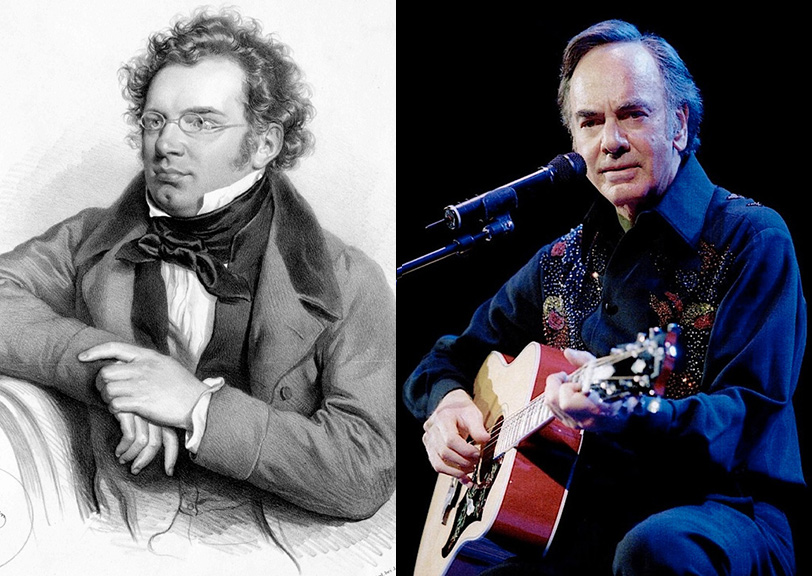ENTER YOUR EMAIL TO RECEIVE OUR WEEKLY NEWSLETTER
Practicing Mindfulness: What Is It? Why Do It?
Mindfulness trains us to refocus our minds to alleviate anxiety, lessen chronic pain, and enhance pleasure in life.
By Anne L. Finger

The last couple of years had been rough. I’d seen a dear friend lose a year-long battle against a brain tumor and had spent anxious weeks in a hospital waiting room supporting my nieces while their mother (my beloved sister-in-law) made a nearly miraculous recovery from a ruptured aorta. I had undergone knee replacement surgery, a fairly common operation, and found recovery both slower and more painful than the doctor or physical therapist had predicted. Result: a slight tendency to hypochondria evolved into full-blown panic attacks: every ache or twinge seemed a prelude to imminent disaster. I berated myself for not being able to take life’s punches in stride. When a friend suggested that I look into a form of meditation called mindfulness, I thought, What have I got to lose? As it turned out, I had everything to gain…
We’re all hard-wired for anxiety: the ‘fight-or-flight-or-freeze‘ instinct is designed to ensure our survival. But when anxiety gets out of control, it can dampen our spirits and increase our susceptibility to illness. If we have pain, it can worsen it. Mindfulness trains us to refocus our minds to avoid distractions, alleviate our anxiety, lessen our chronic pain, and enhance our pleasure in life.
What is mindfulness? The term was coined by Jon Kabat-Zinn, PhD, whose Mindfulness-Based Stress Reduction (MBSR) program, developed at the Massachusetts Medical School, has been validated in numerous scientific studies and associated with beneficial changes in the brain. MBSR combines meditation with body scans and gentle yoga stretches that bolster awareness of your mind/body connection. Mindfulness is one form of meditation that helps us create greater awareness of our daily living; meditation is a broader term for various techniques to heighten our concentration and consciousness.
The two practices are complementary, and there are areas where they overlap. Kabat-Zinn defines mindfulness, which stems from early Buddhism, as “awareness that arises through paying attention, on purpose, in the present moment, nonjudgmentally.” The non-judgmental element is important—and very freeing once internalized. We really don’t have to be our own worst enemies.
Listening online to a free guided meditation by Tara Brach, a noted psychologist and mindfulness teacher, I learned that we can use the sense of our breathing—through abdomen, chest, or nose—to help move our thoughts away from what’s been called the “cycle of negativity” to a happier place where we can appreciate, even savor, the particular moment. Intrigued, I invested in a “Mindfulness Daily” phone app, 40 brief sessions of guided meditation with Brach and Jack Kornfield, another prominent teacher. [See Resources]
Here’s how it works for me: Each morning, before getting out of bed, I spend the 10 minutes or so focusing on the rhythm of my abdominal breathing, listening to the sounds near and far and to the various guided imagery. When my shoulders tighten, I picture them going from ice to water, water to gas. When I’m frightened, I envision myself in a lovely forest, with a sun shower descending through the foliage, and people I love surrounding me. I’ve learned numerous stress-relieving scenarios that I employ through the day. The valuable lesson about being nonjudgmental of myself and others? I’m working on it.
When I finish my wakeup meditation, I still try to do The New York Times mini crossword puzzle online in less than 1 minute. But now, if it takes me longer, that’s OK. Then I stretch, smile, and start my day.
To gain further insights about mindfulness, I spoke with several New York City teachers and practitioners. Sharon Salzberg is a renowned teacher, the author of 10 books, and a founder of the highly acclaimed Insight Meditation Society in Barre, Massachusetts. Her world wide studies and travels stemmed from her realization that meditation could help her overcome the suffering of a difficult childhood. “You become more focused, connected to yourself, your experiences, to others,” she says. “This opens you to understanding and insights. Looking at my own fears, taking an immediate interest in what they feel like, I realize I’m afraid because of stories I tell myself—things I think I know—that I don’t really know.” For example, she suggests, “We’re taught that compassion makes us weak but when we look at experiences, we see that compassion makes us stronger; it’s anger that makes us weaker”. [Note: Salzberg is a featured speaker in the forthcoming “Mindfulness in America” event at Town Hall on October 8th and 9th. See Resources below for details.]
Amy Gross found her meditation experiences so valuable that she left a prestigious and gratifying position as the editor in chief of O, the Oprah Magazine in 2008 to practice and teach MBSR. Gross studied with Jon Kabat-Zinn, and she cites his question, “Why do we practice?” and his answer: “So we don’t miss our lives.” Mindfulness, she says, “is being here—aware, open, curious, your senses receptive. Every moment can be fresh, creative, vivid.”
Dee Tolbert, a psychotherapist, was very ill with Lyme disease when she began taking MBSR classes. She credits Gross, her teacher, and the practice for substantially improving her life. “I still struggle with Lyme,” she says, “but I don’t think I would have made the strides in my health or be able to tolerate the suffering without Amy’s helping hand and my practice. Meditation relaxes my mind, breath, body, and muscles, which eases the pain.” Practicing has also led her to take herself less seriously. “You do your best, you have good intentions, but ultimately ‘the chips fall where they may.’ There are many factors beyond your control.”
Mindfulness takes practice, and it isn’t always easy. I’ve learned from listening to Tara Brach that we often struggle with mindfulness because we don’t approach it with an attitude of friendliness, interest, compassion, and warmth. She calls our tendency toward self-judgment the “trance of unworthiness.” We may worry we’re not measuring up.
With practice, you can learn to be a patient friend to yourself “and begin to radically reduce the strength of the inner critic,” says Brach. Smile, she suggests. “Smiling affects areas of the brain associated with happiness; it can’t cause happiness, but it can tip you in that direction.” Begin by sensing a smile around your eyes, then your mouth, your heart, and then sense and feel that smile throughout your body.
One way Salzberg deals with her inner critic is by giving it a name or persona. She chose Lucy, of Peanuts fame, who told Charlie Brown, “The problem with you is that you’re you.” When feelings of worthlessness, shame, or fear arise, she acknowledges them through mental noting: “Hi, Lucy,” or “Chill it, Lucy,” in a friendly manner.
If you want to explore mindfulness, you may want to start with a phone app, or book, and then proceed to classes [See Resources]. Salzberg advocates daily practice, even for only 10 minutes. Gross usually meditates for about 45 minutes daily and has gone on retreats for as long as 3 months. Tolbert commits to sitting for 45 minutes every day and practices paying attention during routine tasks, such as washing the dishes. She also meets monthly with a group of women guided by a meditation teacher, and she takes MBSR classes. Practitioners stress the importance of community, possibly organizing a group of friends to support one another.
Practitioners also point out the benefits of mindfulness to our larger society—particularly relevant in our difficult times. These practices hold tremendous power, says Salzberg, citing an actor who overcame his stage fright by thinking, “It’s us; we’re here,” joining himself with his audience. “The more we see self versus others,” Salzberg says, “the less strength we have. Loving kindness and compassion are the opposites of fear.”
. . . . . . . . . . . .
Resources
Mindfulness in America: a two-day event at Town Hall with Anderson Cooper, Jewel, Jon Kabat-Zinn, Sharon Salzberg, others. Sunday, October 8, 7 pm and Monday, October 9, 10:00 am to 6 pm. Tickets for the two-day event start at $199; digital tickets for $50 also available. mindfulnessinamericasummit.com
Mindfulness Daily: 40 brief guided online sessions with Tara Brach and Jack Kornfield. Available from soundstrue.com; $37. Both Brach and Kornfield offer podcasts and free talks online: tarabrach.com and jackkornfield.com.
10 Percent Happier Mindfulness Guide, with Dan Harris and meditation teachers, including Sharon Salzberg. Available at 10percenthappier.com; 7-day free introduction, then $9.99 a month for subscription.
Jon Kabat-Zinn, PhD. Mindfulness for Beginners: Reclaiming the Present Moment and Your Life (book/CD).
Sharon Salzberg. Free podcasts of interviews, information about appearances, books, teaching. Her most recent book is Real Love: The Art of Mindful Connection. For beginners, she recommends Real Happiness: The Power of Meditation.
New York Open Center, 22 East 30th Street, New York, 212-219-2527. MBSR classes, 8 sessions $340 for members/$410 nonmembers, lunchtime meditation. opencenter.org
New York Insight Meditation Center, 28 West 27th Street, 10th Floor, New York, 212-213-4802. Ongoing MBSR classes, $450 members/15% discount nonmembers. Also talks, courses, and retreats. nyimc.org
. . . . . . . . . . . .
Anne L. Finger is a writer and editor whose essays and articles on health, medicine, and other topics have appeared in The New York Times, Los Angeles Times, Parents, Health, Medscape, and many other publications. She is the coauthor of two books.












October 5th, 2017 at 10:05 am
From Dona Munker
Thank you for the good article on mindfulness and the resources for learning how to do it. Another excellent resource in NYC is the Nalanda Institute on W 15th Street, . This organization offers regular drop-in mindfulness meditation for beginners and beyond on a pay-what-you-want basis. Nalanda’s (secular) approach is based on Tibetan meditation philosophy rather than Jon Kabat-Zinn’s (secular) Japanese Zen approach, but the practice and aims of each are similar. I’ve found both enormously rewarding, though in slightly different ways.
Readers who feel that they might benefit from a less effortful and non-contemplative type of meditation (“contemplative” meditation meaning meditation that focuses attention on breathing, sounds, random thoughts, etc.—that is, on the present moment) might want to look into transcendental meditation. T.M.’s approach is rooted in Hindu yoga practice. It is also secular but takes what could be called a purely physiological approach to mental liberation through the silet repetition of a particular sound, or “mantra.” T.M. is deliberately easier than mindfulness meditation—almost anyone can do it—but it does involve two 20-minute sessions a day and a fairly steep one-time fee for the four sessions needed to learn how. Its physiological benefits, especially to cardiovascular health and (I believe) diabetes, are well-documented. Those interested can learn more at Dona Munker